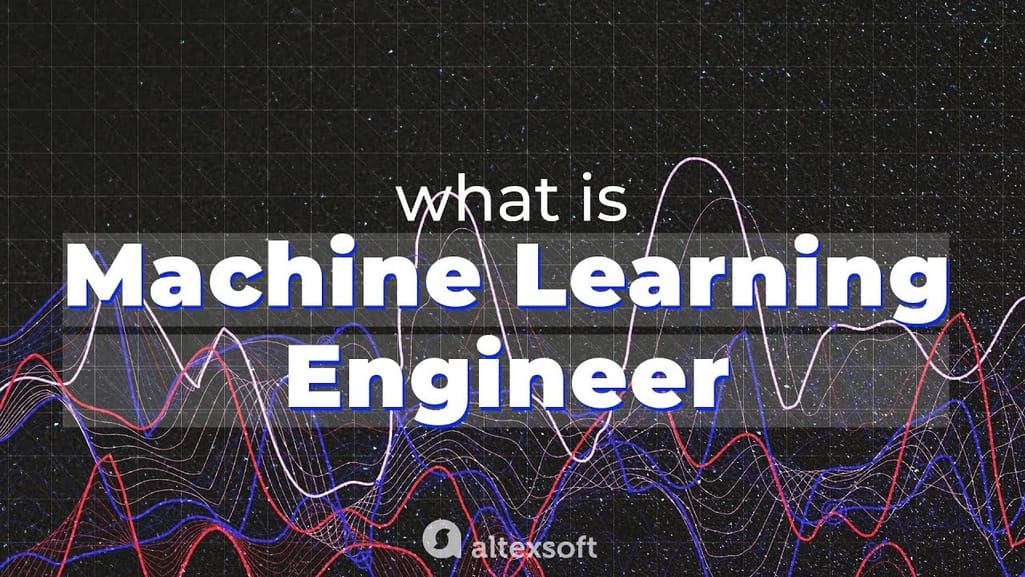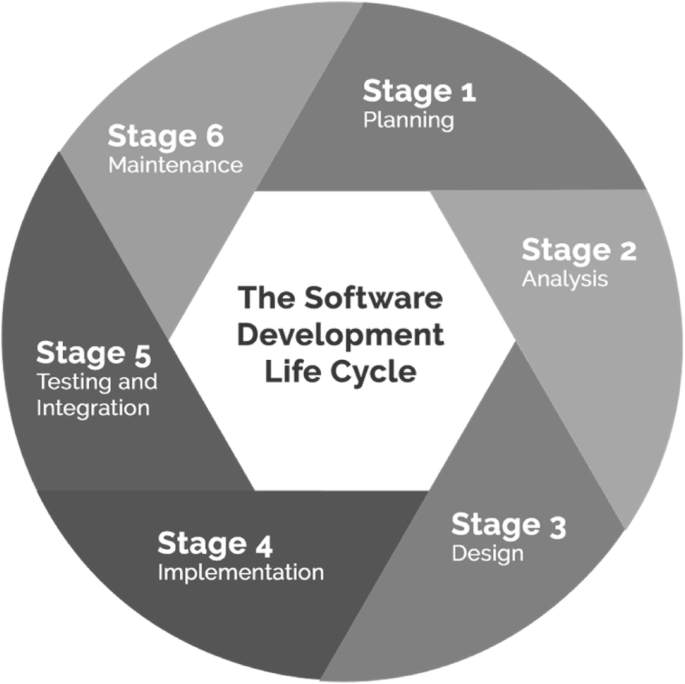All Categories
Featured
Table of Contents
- – The Definitive Guide to How To Become A Machin...
- – Not known Details About Software Engineering I...
- – Generative Ai For Software Development Fundam...
- – What Does Master's Study Tracks - Duke Electr...
- – The smart Trick of Software Engineer Wants T...
- – Things about Machine Learning Engineer Course
- – The Only Guide to Machine Learning Engineer ...
Some individuals think that that's disloyalty. Well, that's my entire occupation. If somebody else did it, I'm going to use what that person did. The lesson is placing that apart. I'm requiring myself to think with the feasible solutions. It's even more concerning consuming the web content and attempting to use those concepts and less concerning finding a collection that does the job or searching for somebody else that coded it.
Dig a bit deeper in the mathematics at the start, so I can develop that structure. Santiago: Finally, lesson number 7. This is a quote. It states "You have to recognize every detail of an algorithm if you wish to use it." And afterwards I state, "I believe this is bullshit advice." I do not believe that you have to comprehend the nuts and screws of every algorithm before you use it.
I would have to go and examine back to in fact get a much better instinct. That doesn't imply that I can not address points utilizing neural networks? It goes back to our arranging instance I think that's just bullshit advice.
As an engineer, I have actually dealt with numerous, lots of systems and I've utilized several, numerous points that I do not understand the nuts and screws of exactly how it works, despite the fact that I recognize the effect that they have. That's the last lesson on that particular thread. Alexey: The amusing point is when I think of all these collections like Scikit-Learn the formulas they use inside to apply, for instance, logistic regression or another thing, are not the like the algorithms we research in equipment knowing courses.
The Definitive Guide to How To Become A Machine Learning Engineer - Uc Riverside
So even if we attempted to discover to obtain all these fundamentals of device learning, at the end, the formulas that these collections use are different. Right? (30:22) Santiago: Yeah, definitely. I think we need a great deal a lot more pragmatism in the market. Make a lot even more of an influence. Or concentrating on supplying value and a little much less of purism.

By the way, there are two various paths. I typically talk to those that intend to operate in the industry that want to have their influence there. There is a path for scientists which is completely different. I do not attempt to discuss that because I don't understand.
However right there outside, in the market, pragmatism goes a long way without a doubt. (32:13) Alexey: We had a remark that claimed "Really feels more like inspirational speech than chatting about transitioning." So possibly we should switch. (32:40) Santiago: There you go, yeah. (32:48) Alexey: It is an excellent inspirational speech.
Not known Details About Software Engineering In The Age Of Ai
Among the important things I intended to ask you. I am taking a note to speak regarding ending up being much better at coding. But first, allow's cover a number of things. (32:50) Alexey: Let's start with core devices and structures that you need to learn to actually change. Allow's claim I am a software engineer.
I understand Java. I know SQL. I recognize how to use Git. I recognize Bash. Maybe I know Docker. All these things. And I find out about artificial intelligence, it appears like a great thing. So, what are the core tools and frameworks? Yes, I enjoyed this video and I get convinced that I do not need to obtain deep into mathematics.
Santiago: Yeah, absolutely. I think, number one, you must begin learning a little bit of Python. Since you currently know Java, I do not think it's going to be a significant shift for you.
Not since Python is the same as Java, yet in a week, you're gon na obtain a lot of the differences there. Santiago: Then you get specific core devices that are going to be utilized throughout your whole career.
Generative Ai For Software Development Fundamentals Explained
That's a library on Pandas for information adjustment. And Matplotlib and Seaborn and Plotly. Those three, or one of those three, for charting and displaying graphics. You obtain SciKit Learn for the collection of device understanding formulas. Those are tools that you're mosting likely to need to be utilizing. I do not recommend just going and learning more about them unexpectedly.
Take one of those training courses that are going to begin introducing you to some troubles and to some core ideas of machine knowing. I don't remember the name, but if you go to Kaggle, they have tutorials there for complimentary.
What's great regarding it is that the only need for you is to recognize Python. They're going to present a trouble and inform you exactly how to utilize choice trees to fix that particular problem. I assume that procedure is very effective, due to the fact that you go from no maker discovering history, to comprehending what the trouble is and why you can not resolve it with what you recognize right now, which is straight software program engineering practices.
What Does Master's Study Tracks - Duke Electrical & Computer ... Mean?
On the various other hand, ML engineers focus on structure and releasing artificial intelligence designs. They focus on training designs with data to make forecasts or automate jobs. While there is overlap, AI engineers deal with more varied AI applications, while ML designers have a narrower concentrate on artificial intelligence formulas and their useful implementation.
Machine discovering engineers concentrate on creating and releasing device knowing models into manufacturing systems. On the other hand, information researchers have a wider role that consists of data collection, cleaning, exploration, and building designs.
As organizations significantly take on AI and artificial intelligence modern technologies, the demand for skilled experts expands. Artificial intelligence engineers deal with cutting-edge tasks, add to advancement, and have affordable wages. Success in this area calls for constant discovering and keeping up with advancing innovations and strategies. Equipment knowing duties are generally well-paid, with the capacity for high gaining capacity.
ML is essentially different from traditional software application development as it concentrates on training computer systems to gain from data, rather than programs explicit rules that are executed methodically. Unpredictability of outcomes: You are possibly made use of to creating code with predictable outputs, whether your function runs once or a thousand times. In ML, nevertheless, the outcomes are less certain.

Pre-training and fine-tuning: Exactly how these models are educated on huge datasets and after that fine-tuned for particular tasks. Applications of LLMs: Such as text generation, view analysis and details search and access. Papers like "Focus is All You Need" by Vaswani et al., which introduced transformers. On the internet tutorials and programs concentrating on NLP and transformers, such as the Hugging Face course on transformers.
The smart Trick of Software Engineer Wants To Learn Ml That Nobody is Talking About
The capacity to handle codebases, combine adjustments, and settle disputes is simply as crucial in ML development as it is in conventional software program jobs. The skills created in debugging and testing software application applications are extremely transferable. While the context may change from debugging application reasoning to recognizing issues in information handling or design training the underlying concepts of methodical investigation, theory screening, and iterative refinement coincide.
Maker knowing, at its core, is greatly dependent on statistics and chance theory. These are essential for recognizing exactly how formulas find out from data, make forecasts, and assess their performance. You should take into consideration coming to be comfy with concepts like statistical relevance, circulations, theory screening, and Bayesian thinking in order to layout and translate versions efficiently.
For those thinking about LLMs, a thorough understanding of deep understanding styles is useful. This includes not only the technicians of semantic networks but also the style of certain designs for different use situations, like CNNs (Convolutional Neural Networks) for image processing and RNNs (Persistent Neural Networks) and transformers for sequential data and natural language processing.
You must recognize these concerns and discover methods for identifying, reducing, and communicating concerning bias in ML designs. This includes the potential effect of automated decisions and the moral implications. Lots of designs, especially LLMs, call for considerable computational resources that are often provided by cloud platforms like AWS, Google Cloud, and Azure.
Structure these abilities will certainly not just facilitate a successful shift right into ML but likewise make sure that developers can contribute successfully and responsibly to the advancement of this dynamic area. Theory is crucial, yet absolutely nothing beats hands-on experience. Beginning functioning on jobs that allow you to use what you've learned in a sensible context.
Construct your tasks: Beginning with simple applications, such as a chatbot or a text summarization device, and progressively enhance intricacy. The field of ML and LLMs is quickly progressing, with brand-new advancements and technologies emerging consistently.
Things about Machine Learning Engineer Course
Contribute to open-source jobs or create blog site messages about your learning journey and jobs. As you obtain know-how, begin looking for chances to incorporate ML and LLMs into your job, or look for new roles focused on these modern technologies.

Vectors, matrices, and their duty in ML algorithms. Terms like version, dataset, features, tags, training, reasoning, and validation. Data collection, preprocessing techniques, design training, examination procedures, and implementation considerations.
Choice Trees and Random Forests: Intuitive and interpretable versions. Matching problem types with suitable models. Feedforward Networks, Convolutional Neural Networks (CNNs), Frequent Neural Networks (RNNs).
Data circulation, makeover, and function engineering strategies. Scalability concepts and performance optimization. API-driven approaches and microservices combination. Latency monitoring, scalability, and version control. Constant Integration/Continuous Implementation (CI/CD) for ML operations. Model monitoring, versioning, and efficiency tracking. Spotting and attending to modifications in model efficiency gradually. Addressing performance traffic jams and resource administration.
The Only Guide to Machine Learning Engineer Learning Path

Program OverviewMachine learning is the future for the future generation of software program experts. This program functions as a guide to artificial intelligence for software program designers. You'll be presented to three of one of the most pertinent parts of the AI/ML technique; overseen understanding, semantic networks, and deep learning. You'll grasp the differences between conventional shows and artificial intelligence by hands-on development in monitored learning prior to developing out complex dispersed applications with semantic networks.
This course functions as a guide to equipment lear ... Program A lot more.
Table of Contents
- – The Definitive Guide to How To Become A Machin...
- – Not known Details About Software Engineering I...
- – Generative Ai For Software Development Fundam...
- – What Does Master's Study Tracks - Duke Electr...
- – The smart Trick of Software Engineer Wants T...
- – Things about Machine Learning Engineer Course
- – The Only Guide to Machine Learning Engineer ...
Latest Posts
The Best Courses For Machine Learning Interview Preparation
How To Negotiate A Software Engineer Salary After A Faang Offer
Tips For Acing A Technical Software Engineering Interview
More
Latest Posts
The Best Courses For Machine Learning Interview Preparation
How To Negotiate A Software Engineer Salary After A Faang Offer
Tips For Acing A Technical Software Engineering Interview